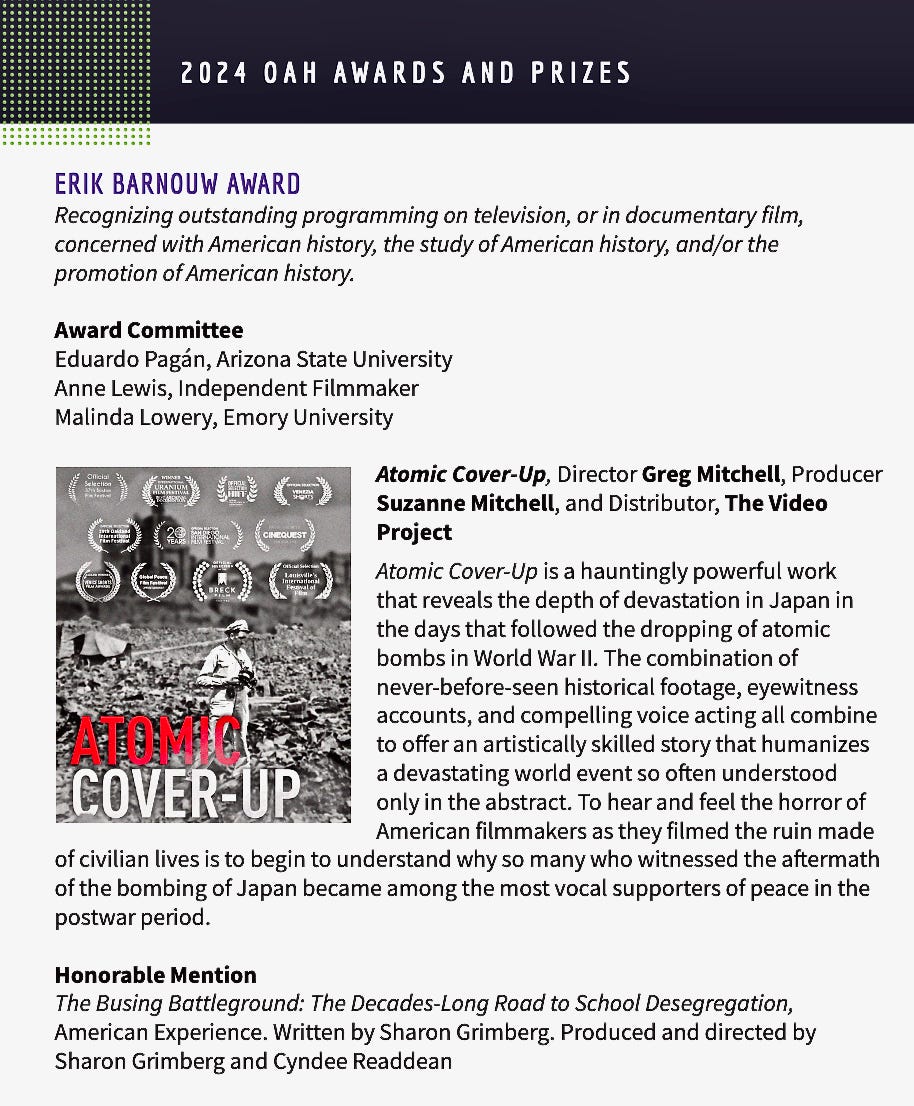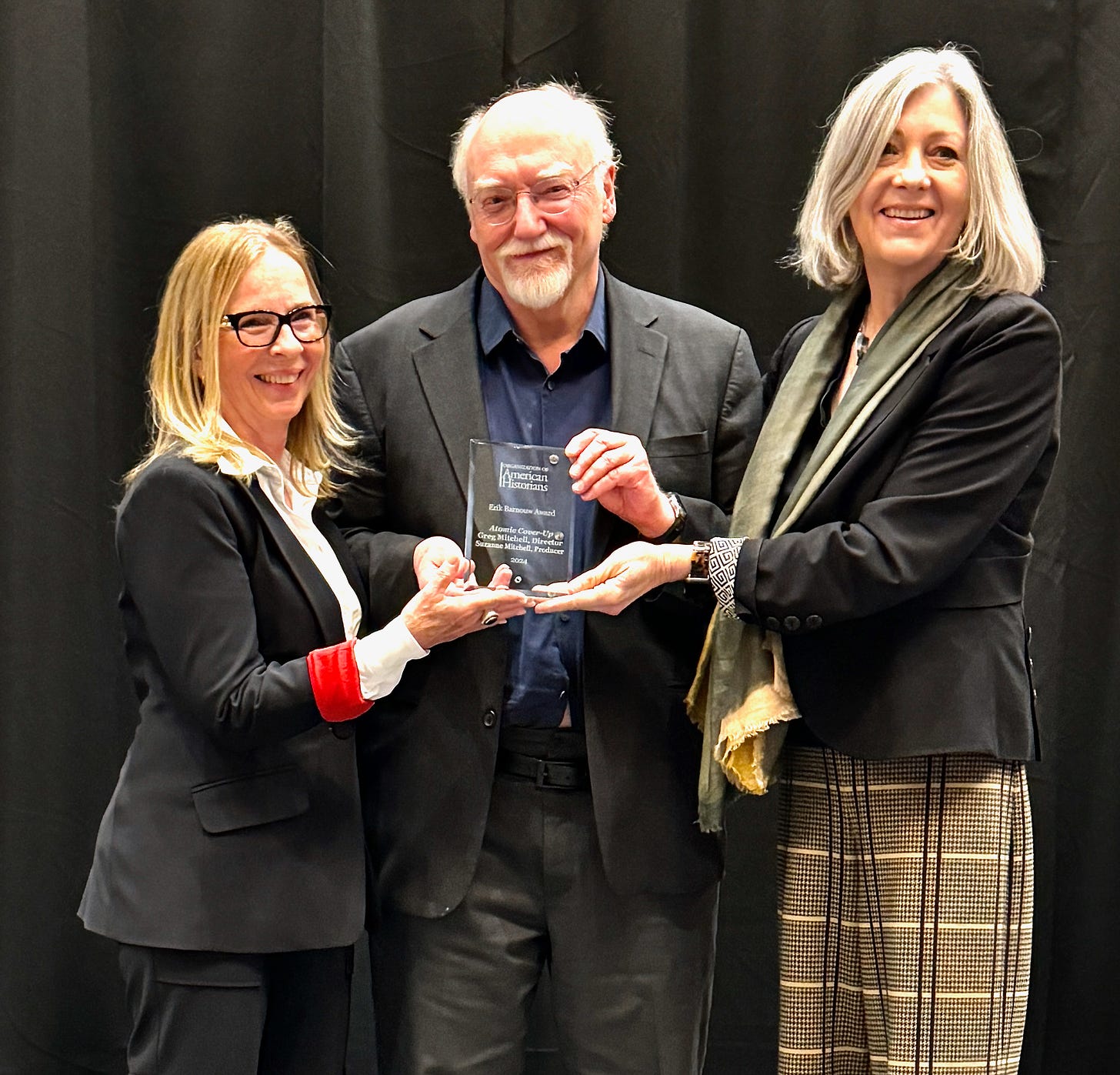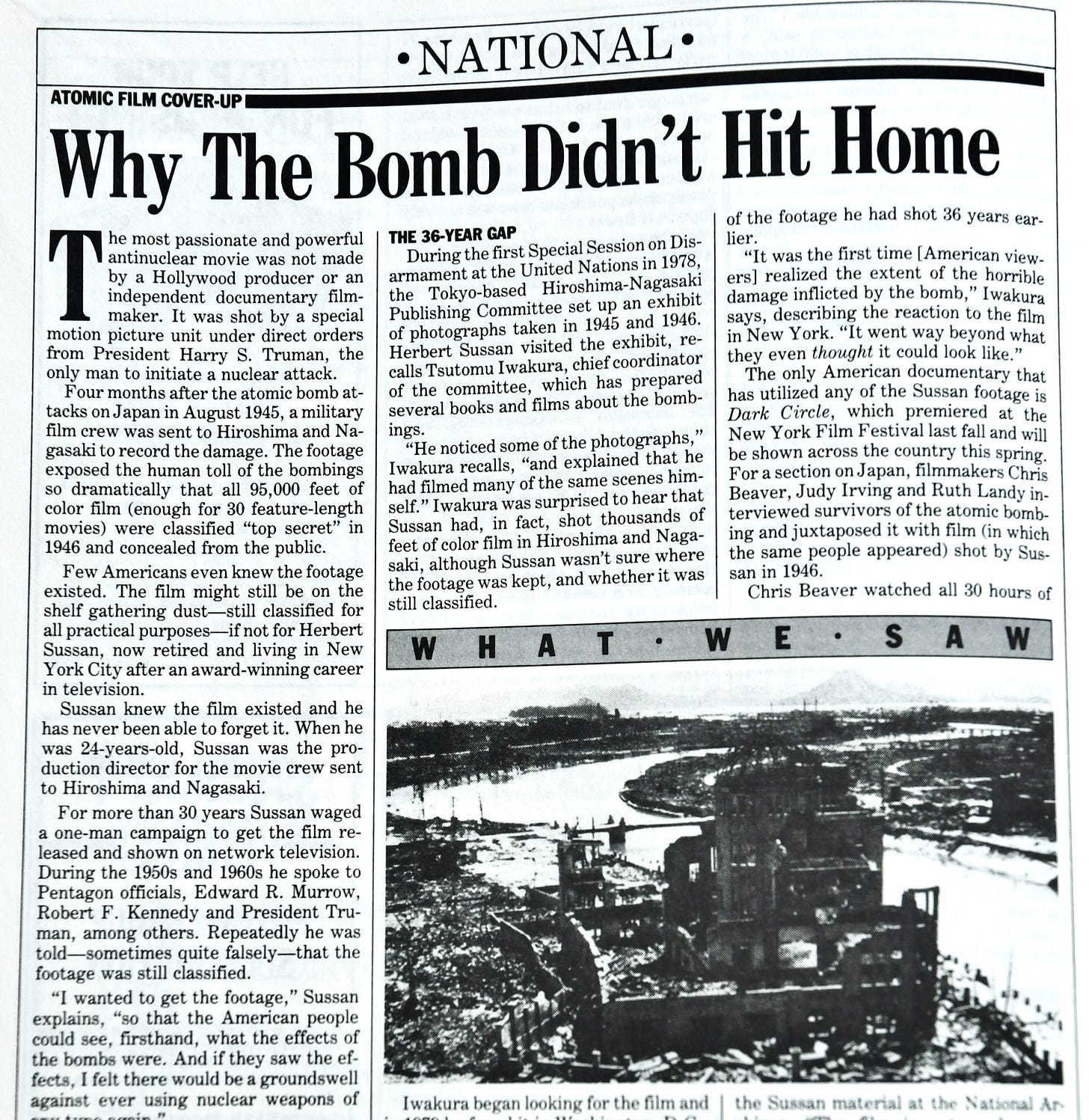Reprinted with permission from Greg Mitchell’s newsletter Between Rock and a Hard Place.
Just back from New Orleans last night. After many trips from about 2001-2009, this was our first visit to a beloved city in quite awhile. I had posted last week about the trip but only in relation to the annual French Quarter Festival, as “forced secrecy” surrounded the true reason: Winning the top, and only, film award from the Organization of American Historians (OAH) – largest group of its kind – for the year’s best documentary or TV program, Atomic Cover-up (which I wrote and directed). It was presented Friday night at their annual conference, typically attended by 1500 or more folks.
Previous winners, going back decades, included many Oscar/Emmy winners and nominees, several by Ken Burns, and so forth. Of course, this is especially gratifying since I have, broadly speaking, been working on it since June 1982. But that’s another story. You might call it The Parts Left Out of Oppenheimer.
Atomic Cover-up has won three previous awards and screened at twenty festivals in the U.S. and abroad (including in Berlin, Tokyo and Venice). I’ve written about the contents of the film here previously, so mainly today: links, trailer, photo.
First the trailer:
Here is the award announcement, below, in the official program. Glad to see the unusual citing of the “voice acting,” so thanks again to Dennis Predovic, Osamu Inoue and Rob Burgos (who also edited the film). Barbara Bedway was associate producer, and advisors Alex Gibney, Alex Winter, Markus Nornes and the late great Marty Sherwin. Also thanks to Leslie Sussan and Robert Jay Lifton. A full press release is coming but this will suffice for now:

This leads to a pic from the ceremony, with the film’s producer Suzanne Mitchell (amazingly, no relation) on the left and outgoing OAH president Anthea Hartig, who now directs the Smithsonian’s National Museum of American History. A few hours later, fears of a nuclear World War III re-emerged with Iran’s retaliatory attack on Israel.

To contact me, send a query via Comment or send an email via this site, or to gregmitch34@gmail.com.
Now, a few more key links:
- The main web site for the film, which includes background, many responses from notables, various links and graphics.
- For educational uses, community screenings, or personal DVD purchase, go to the distributor The Video Project.
- The “companion book” and ebook at Amazon.
- Also you might take a look at my “other” newsletter, which covered issues around the Christopher Nolan Oppenheimer film intensely for weeks and now explores numerous issues surrounding nuclear threat.
Here’s just a bit more on the film and a link to one of my substack pieces.
“Atomic Cover-up” is the first documentary to explore the bombings of Hiroshima and Nagasaki in 1945 from the unique perspective, words and startling images of the brave cameramen and directors who risked their lives filming in the irradiated aftermath. It reveals how this historic footage, created by a Japanese newsreel crew and then an elite U.S. Army team (who shot the only color reels), was seized, classified top secret, and then buried by American officials for decades to hide the full human costs of the bombings as a dangerous nuclear arms race raged. All the while, the producers of the footage made heroic efforts to find and expose their shocking film, to reveal truths of the atomic bombings that might halt nuclear proliferation. “Atomic Cover-up” represents, at least in part, the film they were not allowed to make, as well as a tribute to documentarians everywhere.
Finally, I assigned, edited and wrote sidebars for the highly influential first major story in Nuclear Times on what would become Atomic Cover-up in early… 1983.

Thanks for reading Between Rock and a Hard Place ! Subscribe for free to receive new posts and support my work.
Greg Mitchell is the author of a dozen books, including “Hiroshima in America,” and the recent award-winning The Beginning or the End: How Hollywood – and America – Learned to Stop Worrying and Love the Bomb, and has directed three documentary films since 2021, including two for PBS (plus award-winning “Atomic Cover-up”). He has written widely about the atomic bomb and atomic bombings, and their aftermath, for over forty years. He writes often at Oppenheimer: From Hiroshima to Hollywood.



